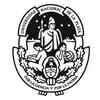The United States Department of Agriculture reported that sow mortality ranges from 2.5% to 3.7% each year, depending on herd size1. It also was stated that annual mortality rates of sows in typical confined-sow herds should not exceed 3%2. In contrast, some sow herds experience annual losses of at least 10% of inventoried females3-6. The reasons for sow mortality are poorly understood; however, larger herd size, greater parity, and short lactation length were identified as risk factors6,7.
Pork producers attempt to reduce sow mortality for a variety of reasons, including animal welfare concerns, employees’ morale5, and financial losses associated with high sow mortality. Financial losses include the value of lost sows and lost pigs, the cost of early female replacement, and depletion of sow herd quality as culling is less intentional5-8. An increase in sow mortality from 3% to 14% was estimated to impose an annual financial loss of US$63 for every remaining female in the herd8. A greater understanding of the causes of sow mortality would assist producers’ efforts to reduce sow deaths. Therefore, this case report describes the results of intensive postmortem evaluations of sows in a herd that was experiencing higher than expected sow mortality.
Case herd and management
A 5200-sow herd in North Carolina was chosen for the study. The sows were crossbred Landrace (75%) and Large White (25%) with an average parity of 3.25. The farm has two farrowing barns with 16 rooms per barn. In addition, there are eight breeding-gestation barns. The breeding, gestation, and farrowing buildings are equipped with cool-cell ventilation and stalls for sow housing. Sows received water in common water troughs and feed via individual drop feeders. Piglets were weaned at approximately 20 days of age. Annualized mortality rate averaged > 10% during the investigation. Monthly reports of annualized mortality from the previous year ranged from 7% to 17%. The causes of sow and gilt deaths were appraised with postmortem examinations for 20 weeks between May and October. During the study period, 193 sows died and postmortem examinations were conducted on 130 of them. To evaluate lesions in a subset of the surviving population, a group of cull sows (n = 88) were examined at slaughter. Similar data was recorded for the dead and cull sows.
Classifications of sow death
During this investigation, sow deaths were classified as euthanized, expected deaths, and sudden death. Euthanized deaths were animals that were purposefully terminated for welfare reasons. Expected deaths were animals that were treated and exhibited signs of poor health prior to death. Sudden deaths were animals that were apparently healthy, with no clinical signs prior to death. Individual sow records and clinical histories were used to evaluate factors associated with death.
Necropsy procedures
One investigator was present on the farm for most of the 20 weeks and performed most of the necropsy procedures. Euthanized sows were examined within an hour after death. Overall, sows were examined within 8 hours after death. Necropsy procedures were conducted on a concrete pad located beside the gestation and farrowing facilities and adhered to standard protocols as previously described9. The cranial cavity was not opened unless a history of nervous signs accompanied the death. A primary cause of death based on gross necropsy findings was determined whenever possible. When two or more lesions were found, they were evaluated in the context of their relationship to the clinical signs observed before death. Some lesions, such as gastric ulcers, were categorized according to severity10. A modified three-digit coding system was used to classify descriptive information related to the identified lesions11. The first digit identified the organ system involved, the second digit identified the lesion found in that system, and the last digit identified an etiologic agent confirmed by laboratory diagnostics11. When etiology was not confirmed, the last digit was assigned a zero. A miscellaneous category was included for classification of lesions of low prevalence. An unknown cause was also reported when no visible lesions were identified.
Diagnostic procedures
When gross findings were lacking or inconclusive, tissues from these cases were submitted to the University of Minnesota Veterinary Diagnostic Laboratory (St Paul, Minnesota) for histopathologic evaluation. Paired specimens from lungs, heart, liver, spleen, kidneys, intestines, urinary bladder, and lymph nodes were collected. One set was preserved in 10% neutral buffered formalin, and the second set was submitted for routine microbiologic procedures in an effort to isolate primary swine pathogens. The eyes from sows with cystitis and pyelonephritis, and from randomly selected sows without urinary tract lesions, were enucleated, packaged, identified, and frozen. The aqueous humour was later used to evaluate urea levels at the time of death12. Urea concentration in the aqueous humour was measured with an analyser (Roche Hitachi 912; Roche Diagnostics Inc, Indianapolis, Indiana). The procedure was applied to differentiate renal failure as a cause of death12-16.
Demographic factors
The stages of production, namely, lactation, breeding, and gestation, were recorded at the time of death. Stages were recorded using a 20-week code, which assigned breeding as week 1, gestation as weeks 2 to 17, and lactation as weeks 18 to 20. Parities of dead animals also were recorded. The herd distribution by parity was determined to allow comparison of the herd to dead females. Using a five-point scale, one investigator categorized body condition of dead females. A properly conditioned sow was classified as 3; over-conditioned sows were classed as 3.5, 4, or 5; and under-conditioned sows were classed as ≤ 2.5. A lame sow was defined as an animal unable to bear weight on one leg for > 3 days despite treatment. If a lame sow could not be transported to slaughter within 1 week, then the animal was euthanized. Any animal that was lame on two or more legs and failed to respond to 3 days of treatment was euthanized. Identities of females requiring assistance during farrowing or treatment at any time were recorded daily.
Daily high and low temperatures were recorded by a North Carolina Department of Agriculture Weather Station located 16 km from the premises. The high and low daily room temperatures in each farrowing room, breeding barn, and gestation barn also were recorded from existing hi-lo thermometers in the facilities.
Assessment of cull sows
The 88 cull sows were collected during the last few weeks of the investigation and transported to a local abattoir. Reasons for culling included clinical lameness, presence of skin lesions, body condition scores < 2.5, average born alive less than nine during the last three parities, negative ultrasound pregnancy exam at 35 days of gestation, lost pregnancies after a positive ultrasound test, failure to display estrus, failure to conceive after multiple periods of estrus, and parity > 6. These animals were examined at slaughter to evaluate the distribution of lesions in a subset of the surviving population. Examinations were similar to those conducted on dead sows at the farm, except in one sow. In that case, urine constituents were examined microscopically because visible sediment was evident in the bladder17.
Exclusion of animals from the case
An acute outbreak of proliferative enteropathy (ileitis) occurred during the study, affecting only replacement gilts and causing deaths of 23 animals in a short period of time. These deaths were removed from the analysis to avoid biasing the findings. Some animals died at times when the investigators could not perform postmortem examinations, for example, on weekends. In addition, autolysis was too severe in some sows, particularly in the summer, for meaningful examinations. Thus, complete necropsy findings and data are provided for 107 females.
Demographic factors
The demographics of dead sows are shown in Table 1 (stage of production, type of death, and cause of death), Table 2 (primary lesions) and Figure 1 (parity distribution). Forty-seven per cent of sows were euthanized, 28% of deaths were expected, and 25% of sows died unexpectedly. Sudden death appeared to be more common in females of parities 1, 2, and ≥ 6 (Figure 2). During the study, 70 sows died when room temperatures exceeded 32˚C (Table 3). In previous reports, outside temperatures > 32˚C contributed to mortality rates16, and the upper critical temperatures for sows were 28˚C to 32˚C18.
Causes of death and observed lesions
Arthritis was the most common finding (Table 2). Death was due to euthanasia in all of these cases. Grade 3 gastric ulcers (hemorrhagic ulcer) were responsible for 11 deaths, and 45.5% of affected sows died suddenly. Cystitis and pyelonephritis were found in seven sows and most of these had died suddenly. Secondary lesions were found in 61 sows (57% of all cases; Table 4). Cystitis and pyelonephritis were the most common secondary lesions found, and 50% of these cases were associated with dystocia (retained piglets) as the primary cause of death. The most common cardiac finding was excess pericardial fluid (> 25 mL). Half of these cases were sows with dystocia as a primary cause of death.
Laboratory findings
Tissues from 20 sows were submitted to the University of Minnesota Veterinary Diagnostic Laboratory for histopathological evaluation either to confirm the initial gross findings or when gross findings were lacking or inclusive. In two sows with severe cardiomyopathy as the primary lesion, histopathologic lesions were consistent with right heart failure. In these cases, histopathological changes included marked congestion of the red pulp of the spleen and marked diffuse hepatic centrilobular congestion with atrophy of hepatocytes. In two sows, lung abscesses were grossly evident. Microscopic lesions were compatible with purulent pneumonia. Eosinophilic hepatitis due to migration of Ascaris suum larvae, with focal necrosis and fibrosis, was noted in a few livers. Suppurative pyelonephritis was observed in two sows, with Escherichia coli isolated from urine samples in both cases. One case of mild focal interstitial nephritis was also evident. Twenty-one ocular fluid specimens were analyzed for urea nitrogen. As in previous reports12-13, ocular urea nitrogen concentrations were elevated (13 mg per dL) in the three cases with cystitis and pyelonephritis as primary lesions.

Evaluations of culled sows
Lesions were found in 83% of the cull sows at slaughter. Grade 1 or 2 gastric ulcers were found in 37.3%. Cystitis accounted for 27.1% of lesions. Arthritis and kidney lesions accounted for 23.7% and 20.3% of lesions, respectively. Lesions on serosal membranes, lungs, and reproductive tract comprised 6.8%, 6.8%, and 1.7% of lesions, respectively. With the exception of arthritis, lesions were more prevalent in parity 4 or older sows compared to younger parities. Most culled sows were first parity or greater than fourth parity, with body condition scores usually > 2.5 (Table 5).
Discussion
Various studies previously examined sow mortality3,6,13,19; however, few studies involved large-scale systems16,20,21. Evidently, mortality rates increase with herd size6,7,15. The causes of sow mortality are poorly understood, as postmortem examinations are rarely conducted on dead sows15,20. Also, sows with disorders that are obvious to the producer are rarely investigated, resulting in underestimates of mortality rates related to some causes of death21. Sow mortality for the case farm was comparable to sow losses previously reported3-6. It must be emphasized that the detailed examination of sow mortality in one herd is not necessarily representative of other herds or other seasons of the year.

As in other reports4,15,22, arthritis necessitating euthanasia was a common cause of sow death. Average parity of these sows was < 3. In contrast, other investigators reported that sows older than parity 3 were likely to die as a consequence of arthritis22. However, in this herd, most sows were culled after their sixth parity and older sows could not be evaluated. The precise causes of arthritis in sows are debatable; however, infectious polyarthritis is indicative of a septic focus with bacterial spread to multiple joints23. The location of the septic focus was not determined in this investigation.
The proportion of dead females with grade 3 gastric ulcers, particularly in parity 3 and older sows, was similar to that previously reported3,4,6,24. Several risk factors were associated with ulceration of the pars esophagea10. The sows in this herd were fed once a day during gestation, and thus it is possible that the feeding regimen might have contributed to the high prevalence of gastric ulcers in gestating sows.
The combination of cystitis and pyelonephritis was an important cause of death in sow farms14-25. In our case, 30% of sows had cystitis and pyelonephritis as primary or secondary lesions. Ascending urinary tract infections were noted in > 25% of gestating sows using a common water trough17. Therefore, the high incidence of cystitis and pyelonephritis in sows in this herd may reflect inadequate water consumption. Previous studies indicated that old age was an important factor in cystitis and pyelonephritis in sows24-26; however, the average parity of sows with cystitis and pyelonephritis lesions was 2.1 in our investigation. Since cystitis and pyelonephritis are associated with greater duration of parturition and more farrowing complications25, it was not surprising that 50% of our postmortem cases had cystitis and pyelonephritis as secondary lesions when farrowing complications were considered the primary cause of death.


Approximately 50% of sow mortality occurs during the 3 weeks following parturition5,24. We found similar numbers of dead sows in lactation and gestation. However, fewer sows are in lactation at any given time, and thus, sows were more likely to die during lactation than during gestation.
The association of parity and mortality is difficult to interpret. Sixty-three percent of the dead sows were parity 3 or less, confirming previous reports5,20. The fact that 75% of the herd population was parity 3 or younger may contribute to this observation. For this particular herd, it also was evident that euthanasia was common for parity 1 to 4 animals. Personnel apparently were proactive and willing to make the difficult decision to terminate animals.
When females die on hot days (> 32˚C), tissues are not often submitted to diagnostic laboratories6,27. However, sow mortality is seasonal, with mortality rates increasing in the summer5,6,24. Outside temperatures > 32˚C were identified as critical to mortality rates18,27. Our investigation was conducted primarily during the summer, and most sow deaths occurred when barn temperatures were > 32˚C. Therefore, management of ambient temperature through various cooling devices is essential to reduce sow mortality.
The lesions in cull sows were not necessarily consistent with those associated with sow deaths. Common lesions in cull sows were gastric ulcers (grades 1 and 2). Grade 3 ulcers typically cause death, and thus were rare in surviving cull sows. Collectively, it was evident that urinary tract lesions were common in the cull sows and this represents a potential herd problem, such as insufficient water intake17. It was apparent that locomotor dysfunction also represents an important factor in sow attrition for this farm. To clarify the causes of locomotor dysfunction, it would be necessary to conduct a more thorough evaluation of flooring, nutrition, and other factors for this particular farm.
Slaughterhouse examinations of cull sows provided some insight into locomotor, digestive, and urinary system lesions. However, several other lesions evident in on-farm sows were not observed in cull sows. Perhaps the greatest limitation of examining cull sows is that lesions associated with the peripartum period are not observed.
Implications
- Elucidation of the causes of sow mortality is challenging.
- The causes of sow deaths are variable; however, lesions affecting the locomotor, digestive, reproductive, and urinary systems are common.
- Culling practices influence on-farm sow mortality.
- Slaughterhouse examinations of cull sows do not necessarily reflect the causes of sow mortality.
This article was originally published in Journal of Swine Health and Production 2007;15(1):30–36.




















